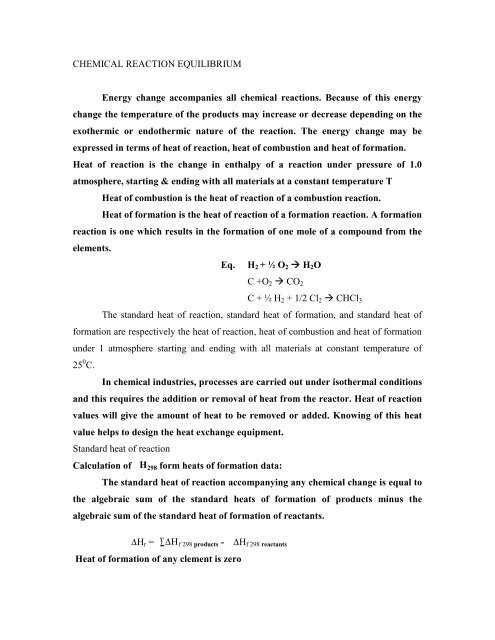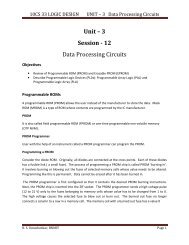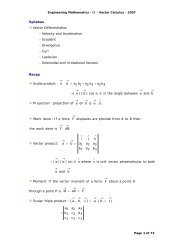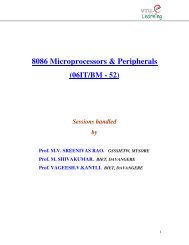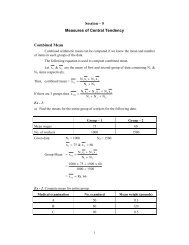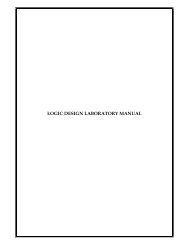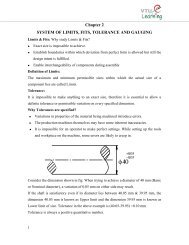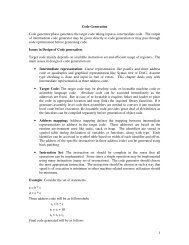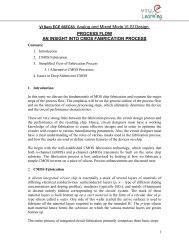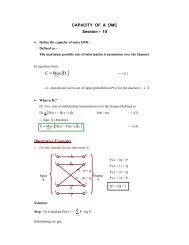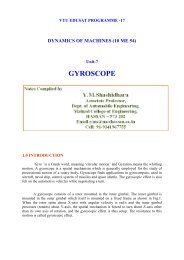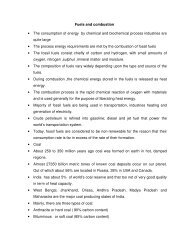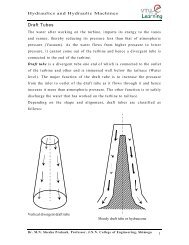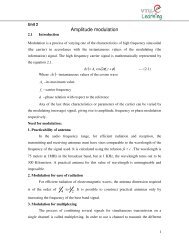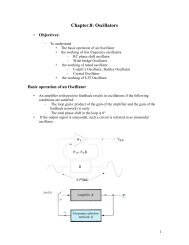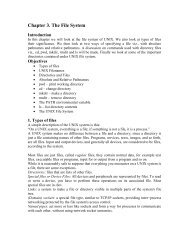Fugacity: It is derived from Latin, expressed as fleetness or escaping ...
Fugacity: It is derived from Latin, expressed as fleetness or escaping ...
Fugacity: It is derived from Latin, expressed as fleetness or escaping ...
Create successful ePaper yourself
Turn your PDF publications into a flip-book with our unique Google optimized e-Paper software.
CHEMICAL REACTION EQUILIBRIUM<br />
Energy change accompanies all chemical reactions. Because of th<strong>is</strong> energy<br />
change the temperature of the products may incre<strong>as</strong>e <strong>or</strong> decre<strong>as</strong>e depending on the<br />
exothermic <strong>or</strong> endothermic nature of the reaction. The energy change may be<br />
<strong>expressed</strong> in terms of heat of reaction, heat of combustion and heat of f<strong>or</strong>mation.<br />
Heat of reaction <strong>is</strong> the change in enthalpy of a reaction under pressure of 1.0<br />
atmosphere, starting & ending with all materials at a constant temperature T<br />
Heat of combustion <strong>is</strong> the heat of reaction of a combustion reaction.<br />
Heat of f<strong>or</strong>mation <strong>is</strong> the heat of reaction of a f<strong>or</strong>mation reaction. A f<strong>or</strong>mation<br />
reaction <strong>is</strong> one which results in the f<strong>or</strong>mation of one mole of a compound <strong>from</strong> the<br />
elements.<br />
Eq. H2 + ½ O2 H2O<br />
C +O2 CO2<br />
C + ½ H2 + 1/2 Cl2 CHCl3<br />
The standard heat of reaction, standard heat of f<strong>or</strong>mation, and standard heat of<br />
f<strong>or</strong>mation are respectively the heat of reaction, heat of combustion and heat of f<strong>or</strong>mation<br />
under 1 atmosphere starting and ending with all materials at constant temperature of<br />
25 0 C.<br />
In chemical industries, processes are carried out under <strong>is</strong>othermal conditions<br />
and th<strong>is</strong> requires the addition <strong>or</strong> removal of heat <strong>from</strong> the react<strong>or</strong>. Heat of reaction<br />
values will give the amount of heat to be removed <strong>or</strong> added. Knowing of th<strong>is</strong> heat<br />
value helps to design the heat exchange equipment.<br />
Standard heat of reaction<br />
Calculation of ∆H 298 f<strong>or</strong>m heats of f<strong>or</strong>mation data:<br />
The standard heat of reaction accompanying any chemical change <strong>is</strong> equal to<br />
the algebraic sum of the standard heats of f<strong>or</strong>mation of products minus the<br />
algebraic sum of the standard heat of f<strong>or</strong>mation of reactants.<br />
∆Hr = ∑∆H f 298 products - ∑∆Hf 298 reactants<br />
Heat of f<strong>or</strong>mation of any clement <strong>is</strong> zero


